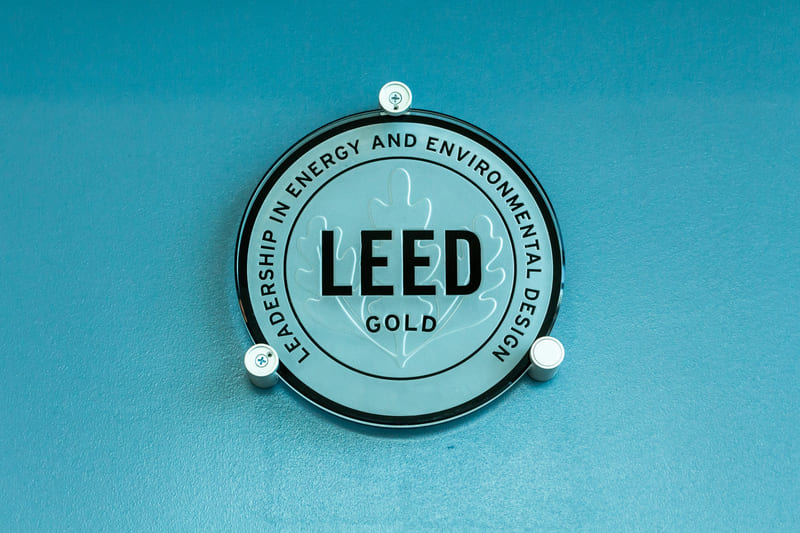
AirMD and LEED

LEED stands for Leadership in Energy and Environmental Design. It’s a widely recognized green building certification program developed by the U.S. Green Building Council (USGBC) to promote sustainable building practices and environmental responsibility in the construction industry.
Here are some key points about LEED:
Certification Levels
LEED offers certification for various types of buildings, including commercial, residential, healthcare facilities, schools, and neighborhood developments. Buildings can achieve different levels of LEED certification based on their performance in several categories, including energy efficiency, water conservation, indoor environmental quality, materials selection, and sustainable site development.
Rating Systems
LEED certification is based on a point system, where projects earn points for meeting specific green building criteria outlined in one of several LEED rating systems. These rating systems include LEED Building Design and Construction (BD+C), LEED Interior Design and Construction (ID+C), LEED Operations and Maintenance (O+M), LEED Neighborhood Development (ND), and LEED Homes.
Categories
The LEED rating systems are organized into categories such as Sustainable Sites, Water Efficiency, Energy and Atmosphere, Materials and Resources, Indoor Environmental Quality, and Innovation in Design. Each category addresses specific environmental and sustainability goals, and projects earn points for implementing strategies that meet the requirements of each category.
Benefits
Achieving LEED certification offers numerous benefits, including reduced energy and water consumption, improved indoor air quality, lower operating costs, enhanced occupant comfort and productivity, and reduced environmental impact. LEED-certified buildings are also often eligible for tax incentives, grants, and other financial incentives.
Process
The process of obtaining LEED certification involves registering the project with the USGBC, submitting documentation demonstrating compliance with LEED requirements, undergoing a review process by the USGBC, and ultimately receiving certification based on the project’s performance. Projects may also undergo onsite inspections to verify compliance with LEED criteria.
Continual Improvement
LEED certification encourages continual improvement and ongoing performance monitoring through requirements for commissioning, energy and water metering, and periodic recertification. This ensures that LEED-certified buildings maintain their sustainability and environmental performance over time.
Overall, LEED certification is widely regarded as a benchmark for sustainable building design, construction, and operation, providing a framework for creating healthier, more environmentally responsible buildings and communit






